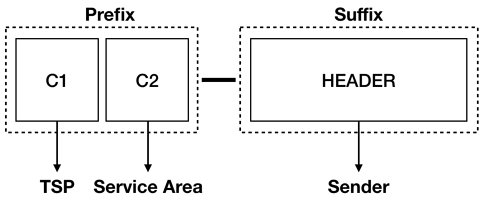If you've ever received an SMS from the likes of VK-ICICIBK or JD-AMAZON, then you've probably wondered about those strange-looking codes.
These are Sender IDs, and they have a standard format under TRAI (Telecom Regulatory Authority of India) rules. If you're aware of them, they can help you identify if a message is from the true source — and save you from SMS fraud.
In this article, we de-mystify everything you ever needed to know about bulk SMS prefixes, how to use them, and how to read them.
What is an SMS Sender ID?
Sender ID is a unique identifier that organizations use to send SMS in India. It appears in your inbox as a sender name and helps you to identify the brand or service behind the message at ease.
But it's more than just a name. The Sender ID format contains critical information about:
- Who is really sending the SMS
- What operator is offering it
- What area or telecommunication region it is originating from
TRAI Bulk SMS Sender ID Regulations
TRAI implemented strict guidelines for bulk SMS in India during December 2008. These are:
- The Sender ID must be precisely 9 characters long
- It should be in the XX-YYYYYY format.
- First 2 characters are the prefix (operator + region)
- The remaining 6 are the sender's name (usually a company or brand)
- The ID must be verified and enrolled using DLT (Distributed Ledger Technology) platforms
- Alphabetical characters alone can be used in Sender IDs — no symbols or special characters
- The Sender Name must clearly indicate the business or brand so that transparency is maintained
For example, if the sender ID is VK-HDFCBK as registered by the bank, then:
- V = Vodafone operator
- K = Kolkata (region)
- HDFCBK = HDFC Bank (remittance sender)
This design enables individuals to recognize who is sending them a text immediately, and positions SMS material as per telecommunication law.
Significance of the Prefix: Operator + Region Codes
The first two digits of the sender ID are called the prefix, and they are in the format:
- First character ? The initial of the mobile operator (e.g., A for Airtel, V for Vodafone, J for Jio)
- Second character ? Telecom circle or region (example: D for Delhi, M for Mumbai, X for Karnataka)
Example Prefixes and What They Mean:
| Prefix | Meaning |
|---|---|
| AD | Airtel Delhi |
| BP | BSNL Punjab |
| VK | Vodafone Kolkata |
| VM | Vodafone Mumbai |
| JD | Jio Delhi |
| AX | Airtel Karnataka |
| JM | Jio Mumbai |
| BR | BSNL Rajasthan |
| JG | Jio Gujarat |
| JX | Jio Karnataka |
This information makes it easier to recognize if a message comes from a registered and reliable source.
Full List of Service Provider Codes
| Code | Operator Name |
|---|---|
| A | Airtel (Bharti Airtel & Bharti Hexacom) |
| B | BSNL (Bharat Sanchar Nigam Limited) |
| C | Datacom |
| D | Aircel & Dishnet Wireless |
| E | Reliance Telecom |
| H | HFCL |
| I | Idea Cellular (Aditya Birla Telecom) |
| J | Jio |
| L | Loop Telecom & BPL |
| M | MTNL (Mahanagar Telephone Nigam Ltd) |
| P | Spice Communications |
| R | Reliance Communications |
| S | S Tel Ltd |
| T | Tata Teleservices |
| U | Unitech (Telenor) |
| V | Vodafone Group |
| W | Swan Telecom |
| Y | Shyam Telecom |
Full List of Telecom Circle / Area Codes
| Code | Region |
|---|---|
| A | Andhra Pradesh |
| B | Bihar |
| D | Delhi |
| E | Uttar Pradesh (East) |
| G | Gujarat |
| H | Haryana |
| I | Himachal Pradesh |
| J | Jammu & Kashmir |
| K | Kolkata |
| L | Kerala |
| M | Mumbai |
| N | North East |
| O | Odisha |
| P | Punjab |
| R | Rajasthan |
| S | Assam |
| T | Tamil Nadu (incl. Chennai) |
| V | West Bengal |
| W | Uttar Pradesh (West) |
| X | Karnataka |
| Y | Madhya Pradesh |
| Z | Maharashtra (incl. Goa) |
Why Sender IDs Matter to Users
When you receive an SMS, knowing the meaning of the sender ID will help you with:
- Recognize known sources like banks, web brands, or government agencies at once
- Locate imitation messages on behalf of genuine companies
- Be careful against possible SMS scams or phishing scams
- Make safer decisions in terms of following links or providing personal details
TrueSender utilizes this exact same TRAI-approved data to provide you with validated data on the senders, including their name, telecommunication provider, location, and purpose of the message. This additional transparency ensures you are well-informed and secure.
Last Thoughts
Indian SMS sender IDs also adhere to a standard format, thanks to TRAI rules. The prefixes are not arbitrary in nature—they indicate the sender of the message and the location.
By learning how to decipher SMS sender IDs and prefixes, you can more easily detect fraud, avoid scams, and feel safer sending SMS.
With TrueSender, we make that information work for you so you can see exactly who's reaching out and why—so you can keep your inbox clean, secure, and trustworthy.
